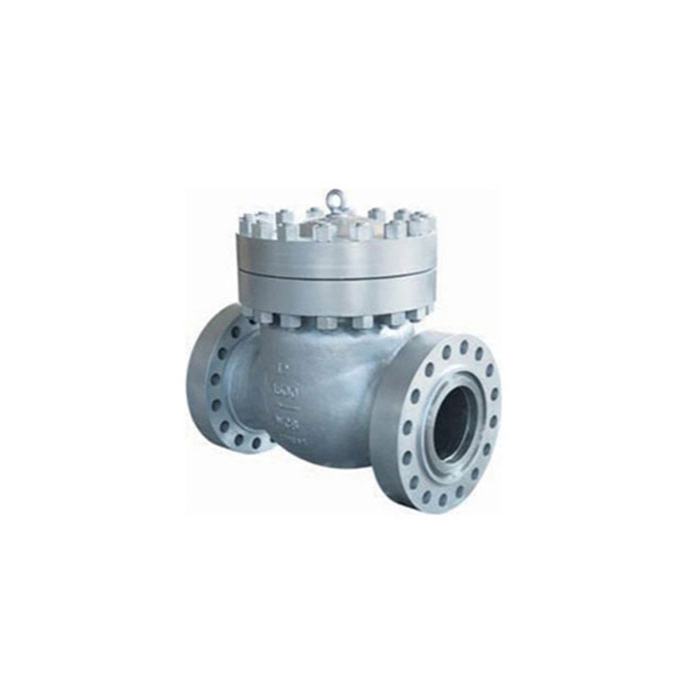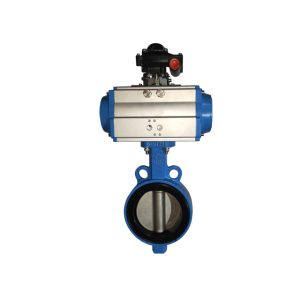Table of Contents
ToggleA flange check valve is a type of valve designed to allow fluid flow in one direction while preventing reverse flow in a piping system.
It features flanged ends that facilitate easy installation between flanged pipe connections.
The primary function of a flange check valve is to prevent backflow, ensuring the unidirectional flow of liquids or gases and maintaining the integrity of pipelines.
To learn more about flange check valves, continue reading.
What is the purpose of a flange valve?
The purpose of flange valves is to make sure valves connect securely to pipes.
They use special flanges with bolts to attach to the pipe’s flanges, making it easy to take them off and put them back on.
These valves are great for handling big pipes and high pressure, which is why they’re so common in industrial places.
What is the function of a flange check valve?
Flange check valves serve similar functions to standard check valves but come with the added benefit of easy installation and maintenance due to their flanged ends.
Prevent Backflow
Flange check valves, like standard check valves, prevent backflow by allowing fluid to flow in only one direction.
Their flanged ends make them easy to install in pipelines, ensuring efficient prevention of reverse flow.
Ensure Secure Connection
The flanged ends of these valves provide a secure and leak-proof connection between the valve and the pipeline.
This helps to maintain the integrity of the fluid system and prevents leaks or loss of pressure.
Facilitate Easy Installation
Flange check valves can be quickly and easily installed between flanged pipe connections without the need for additional welding or threading.
This simplifies the installation process, saving time and labor costs.
Allow for Maintenance
The flanged design of these valves allows for straightforward maintenance and replacement.
They can be easily removed from the pipeline for inspection, cleaning, or repair without disrupting the surrounding piping system.
Provide Versatility
Flange check valves are available in various sizes, materials, and configurations to suit different applications and operating conditions.
This versatility makes them suitable for use in a wide range of industries and fluid systems.
Working Principle of Flange Check Valves
The working principle of flange check valves involves the use of a one-way flow mechanism, typically controlled by a flap or disc inside the valve body.
This mechanism allows fluid to flow freely in one direction while preventing backflow in the opposite direction.
Additionally, the inclusion of flanged ends simplifies installation and ensures a secure connection in the fluid system.
1. One-Way Flow
Flange check valves allow fluid to flow in only one direction, from the inlet to the outlet.
This unidirectional flow is facilitated by the internal components of the valve, which are designed to open and close based on the direction of fluid flow.
2. Flap or Disc Mechanism
Inside the valve body, there is a flap or disc mechanism that opens and closes depending on the direction of fluid flow.
When fluid flows in the correct direction (from inlet to outlet), the flap or disc opens, allowing the fluid to pass through freely.
However, when fluid attempts to flow in the opposite direction (backflow), the flap or disc closes, preventing reverse flow.
3. Spring Mechanism
Some flange check valves may include a spring mechanism to assist in closing the valve quickly and effectively when backflow occurs.
The spring adds extra force to ensure that the flap or disc seals tightly against the valve seat, minimizing the risk of leakage.
4. Flanged Ends
Flange check valves are designed with flanged ends that allow for easy installation between flanged pipe connections.
These flanges provide a secure and leak-proof connection, ensuring the integrity of the fluid system.
Components of a Flanged Check Valve
Flanged check valves are comprised of several essential components that work together to facilitate their operation and ensure effective flow control.
Body
The body of a flanged check valve is the main housing that contains all internal components.
It is typically constructed from durable materials such as cast iron, carbon steel, or stainless steel to withstand high pressures and temperatures.
The body also features flanged ends that allow for easy installation between pipe connections.
Flap or Disc
Inside the body of the valve, there is a flap or disc mechanism that regulates the flow of fluid.
This component opens and closes based on the direction of fluid flow, allowing fluid to pass through freely in one direction while preventing backflow in the opposite direction.
Valve Seat
The valve seat is the sealing surface against which the flap or disc rests when the valve is closed.
It is designed to create a tight seal to prevent any leakage when the valve is in the closed position.
The valve seat is typically made from resilient materials such as rubber or synthetic elastomers.
Hinge Pin
In some flanged check valves, the flap or disc is attached to the body via a hinge pin mechanism.
The hinge pin allows the flap or disc to pivot freely, enabling it to open and close in response to changes in fluid flow direction.
This component is crucial for ensuring smooth operation and reliable performance of the valve.
Spring
Certain flanged check valves may include a spring mechanism to assist in closing the valve quickly and effectively when backflow occurs.
The spring adds extra force to ensure that the flap or disc seals tightly against the valve seat, minimizing the risk of leakage.
Advantages of Flange Check Valves
Reliable Backflow Prevention
Flange check valves effectively prevent backflow in fluid systems, ensuring the unidirectional flow of liquids or gases.
This feature is crucial for maintaining the integrity of pipelines and preventing contamination.
Low Maintenance Requirements
Flange check valves typically have simple designs with few moving parts, resulting in minimal maintenance needs.
This reduces downtime and operational costs associated with valve upkeep.
Versatile Installation Options
Flange check valves are available in various sizes and configurations to accommodate different piping systems.
Their flanged ends allow for easy installation between flanged pipe connections, providing flexibility in system design.
Durability and Longevity
Constructed from robust materials such as cast iron, carbon steel, or stainless steel, flange check valves are highly durable and resistant to corrosion and wear.
This ensures longevity and reliable performance even in demanding environments.
Disadvantages of Flange Check Valves
Pressure Drop
Flange check valves may cause a slight pressure drop in the system due to the obstruction created by the valve body and disc.
This can affect flow rates and efficiency, particularly in high-pressure applications.
Potential for Water Hammer
In certain operating conditions, such as rapid changes in flow velocity or sudden valve closure, flange check valves may induce water hammer—a phenomenon characterized by pressure surges that can damage pipes and components.
Where Flange Check Valves Are Used
Water Supply Systems
Flange check valves are commonly used in water supply networks to prevent the backflow of contaminated water into clean water sources.
They ensure the one-way flow of potable water, safeguarding public health and water quality.
Oil and Gas Pipelines
In oil and gas pipelines, flange check valves play a vital role in maintaining the integrity of the system by preventing the reversal of fluid flow.
They are employed in both upstream and downstream applications to protect equipment and ensure operational safety.
Chemical Processing Plants
Flange check valves find applications in chemical processing plants to regulate the flow of corrosive fluids and prevent cross-contamination between different process streams.
Their durable construction and chemical resistance make them suitable for harsh operating conditions.
HVAC Systems
Flange check valves are utilized in heating, ventilation, and air conditioning (HVAC) systems to control the direction of airflow and prevent backflow in ductwork.
They help maintain optimal indoor air quality and temperature control in commercial and residential buildings.
Key Takeaway
Flange check valves offer the same benefits as standard check valves but with the added advantage of easy installation, secure connection, and simplified maintenance.
Their versatility and reliability make them valuable components in fluid systems where backflow prevention is essential.










